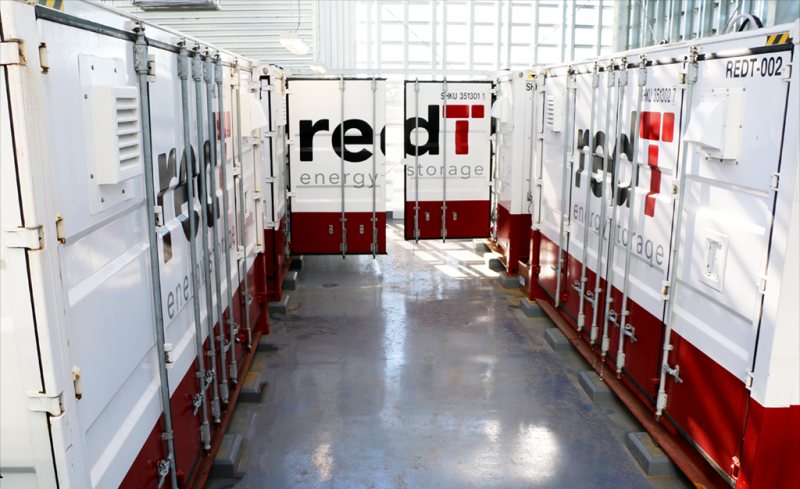
A 1 MWh vanadium flow / lithium-ion hybrid energy storage system is now operational at Monash University’s Clayton campus in Melbourne.
According to system supplier RedT, it’s the largest behind-the-meter C&I (Commercial & Industrial) energy storage system to be installed in Australia and the first of its type globally.
The installation is comprised of 900kWh of vanadium flow batteries (or “flow machines” as RedT calls them) and a 120kW C1-rated lithium-ion battery. RedT says using a combination of the technologies maximises their individual strengths – lithium-ion’s ability to deliver high power for short periods and a flow battery’s workhorse attributes.
“Combined, the flow machine can act as the ‘workhorse’, doing ~80% of the work each day, whilst the lithium element can be used infrequently to provide the final ~20% of the power requirements.”
The system has been installed on the roof of the University’s Biomedical Learning and Teaching Building at the Clayton campus. Working with multiple sources including a 1 MW array of solar panels at the campus, it forms part of the Monash Microgrid currently being deployed at Clayton.
RedT says its partnership with Monash University will demonstrate the economic benefits of decentralised, flexible, energy storage infrastructure solutions at C&I scale.
In October last year, Monash University announced it will be fully powered by renewable energy by 2030 through a $135 million project called the Net Zero Initiative, which the microgrid is an element of.
Last month, the Australian Renewable Energy Agency (ARENA) announced it was partnering with Monash University and technology partner Indra Australia on the microgrid project, providing $2.97 million to support the Clayton trial.
“The project will use Monash University as a ‘living laboratory’ that will help universities form their own microgrids and take control of their energy usage,” said ARENA CFO Ian Kay.
By the end of 2020, the university will also complete its biggest solar rollout, at which point it will be generating 7 GWh of electricity from solar panels annually. What the University can’t source from on-site solar power by 2030 in order to meets its 100% renewable energy goal, it will acquire from off-site renewables.
Clayton campus, established in 1958, is Monash’s biggest campus globally, educating more than 30,000 students each year. Eight faculties are represented on campus: Arts, Business and Economics, Education, Engineering, Information Technology, Law, Medicine, Nursing and Health Sciences, and Science.

 RSS - Posts
RSS - Posts



Speak Your Mind